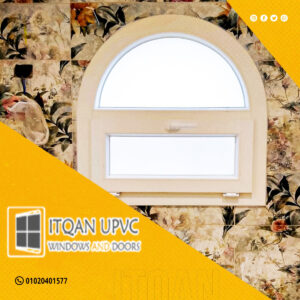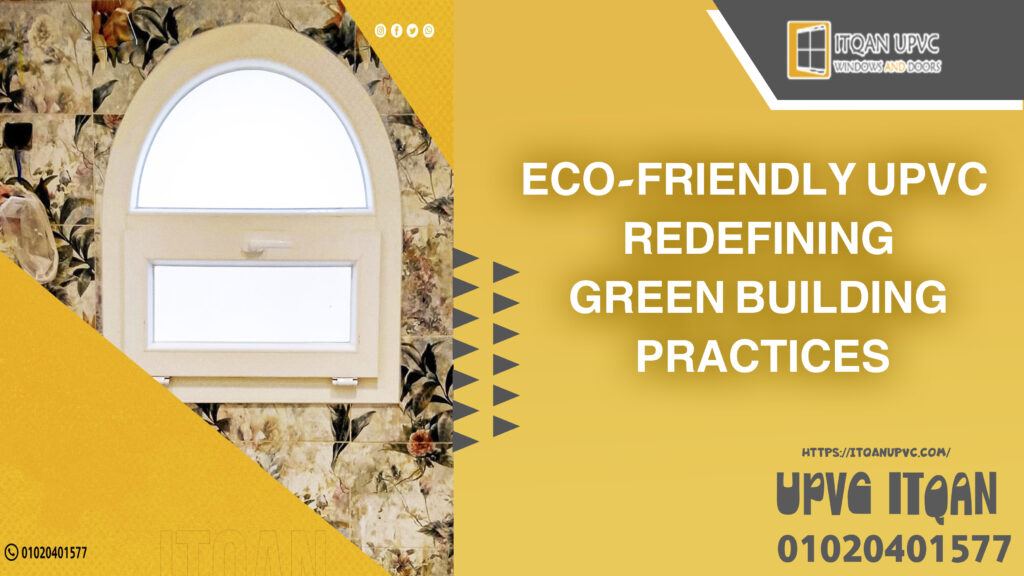Eco-Friendly UPVC: In the pursuit of sustainable construction, builders and homeowners alike are increasingly turning to eco-friendly building materials that minimize environmental impact without compromising on quality or performance. Among these materials, UPVC (Unplasticized Polyvinyl Chloride) has emerged as a frontrunner, offering a versatile, durable, and sustainable option for windows, doors, and other building components. Let’s explore how eco-friendly UPVC is redefining green building practices and shaping the future of sustainable construction.
Understanding Eco-Friendly UPVC:
UPVC, a type of plastic, has undergone significant advancements to enhance its environmental credentials and sustainability:
- Recyclability: UPVC is highly recyclable, with the potential to be reclaimed and repurposed at the end of its lifespan. By recycling UPVC materials, the demand for virgin plastics is reduced, conserving natural resources and minimizing waste sent to landfills.
- Low Toxicity: Unlike traditional PVC, UPVC does not contain harmful additives such as plasticizers, making it a safer and more environmentally friendly option. (Unplasticized Polyvinyl Chloride) is inert and non-toxic, posing minimal risk to human health and the environment throughout its lifecycle.
- Energy Efficiency: UPVC products, such as windows and doors, offer excellent thermal insulation properties, helping to reduce energy consumption for heating and cooling. By enhancing the energy efficiency of buildings, (Unplasticized Polyvinyl Chloride) contributes to lower carbon emissions and mitigates the environmental impact of energy use.
Advantages of Eco-Friendly UPVC:
The adoption of eco-friendly UPVC offers several advantages for green building practices:
- Energy Savings: UPVC windows and doors help minimize heat loss in winter and heat gain in summer, resulting in reduced energy bills and lower carbon emissions. By improving the thermal performance of buildings, eco-friendly UPVC contributes to energy savings and enhanced comfort for occupants.
- Resource Efficiency: UPVC is a durable and long-lasting material that requires minimal maintenance over its lifespan. By choosing UPVC products, builders and homeowners reduce the need for frequent replacements and conserve resources, such as wood and metal, that would otherwise be used in construction.
- Indoor Environmental Quality: UPVC products contribute to better indoor environmental quality by minimizing drafts, air leaks, and moisture intrusion. This helps create healthier and more comfortable living spaces for occupants, supporting their well-being and productivity.
Integration with Green Building Standards:
Eco-friendly UPVC aligns with various green building standards and certification programs, including LEED (Leadership in Energy and Environmental Design) and BREEAM (Building Research Establishment Environmental Assessment Method). By incorporating UPVC products into green building projects, builders can earn credits and achieve certification for sustainable construction practices.
Paving the Way for Sustainable Construction
eco-friendly UPVC is redefining green building practices by offering a sustainable, energy-efficient, and environmentally friendly option for construction projects. With its recyclability, low toxicity, and energy efficiency benefits, UPVC contributes to resource conservation, reduced carbon emissions, and improved indoor environmental quality. By integrating eco-friendly UPVC into building designs and construction practices, stakeholders can embrace sustainable solutions that promote a greener, healthier, and more resilient built environment for generations to come. As the demand for sustainable construction continues to grow, UPVC stands as a reliable and innovative material that is paving the way towards a more sustainable future.
Innovations in Eco-Friendly UPVC:
Continual advancements in eco-friendly UPVC technology promise even greater sustainability and performance:
- Bio-Based Additives: Researchers are exploring the use of bio-based additives derived from renewable sources to enhance the environmental profile of UPVC. By replacing conventional additives with bio-based alternatives, the ecological footprint of UPVC production can be further reduced, contributing to a more sustainable manufacturing process.
- Recycled Content: Manufacturers are increasingly incorporating recycled content into UPVC products, further reducing the reliance on virgin materials and diverting waste from landfills. By utilizing recycled UPVC materials, builders and homeowners can support a circular economy and reduce the environmental impact of construction activities.
- Carbon Neutrality: Some manufacturers are investing in carbon-neutral production processes for UPVC, offsetting emissions through carbon sequestration or renewable energy projects. By achieving carbon neutrality, UPVC manufacturers can minimize their environmental footprint and demonstrate their commitment to sustainability.
Life Cycle Assessment:
A comprehensive life cycle assessment (LCA) is essential for evaluating the overall environmental impact of eco-friendly UPVC throughout its life cycle. By considering factors such as raw material extraction, manufacturing processes, transportation, use, and end-of-life disposal, stakeholders can identify opportunities for improvement and optimize sustainability across the entire product life cycle.
Consumer Awareness and Education:
Educating consumers about the environmental benefits of eco-friendly UPVC is crucial for driving adoption and promoting sustainable construction practices. Builders, architects, and homeowners can make informed decisions by choosing UPVC products with eco-friendly certifications, such as GreenGuard or Cradle to Cradle, that demonstrate compliance with rigorous environmental standards.

Collaboration and Partnerships:
Collaboration among industry stakeholders, government agencies, and environmental organizations is essential for advancing eco-friendly UPVC technology and promoting sustainable construction practices. By working together to share knowledge, foster innovation, and develop best practices, stakeholders can accelerate the transition to a more sustainable built environment.
eco-friendly UPVC is at the forefront of redefining green building practices, offering a sustainable, energy-efficient, and environmentally friendly solution for construction projects. With ongoing innovations, such as bio-based additives, recycled content, and carbon neutrality initiatives, eco-friendly UPVC is poised to further enhance its environmental performance and contribute to a more sustainable built environment. By embracing eco-friendly UPVC and adopting sustainable construction practices, stakeholders can create healthier, more resilient, and environmentally responsible buildings that benefit both people and the planet. As the construction industry continues to evolve, eco-friendly UPVC stands as a beacon of sustainability, driving positive change and shaping a greener future for generations to come.
